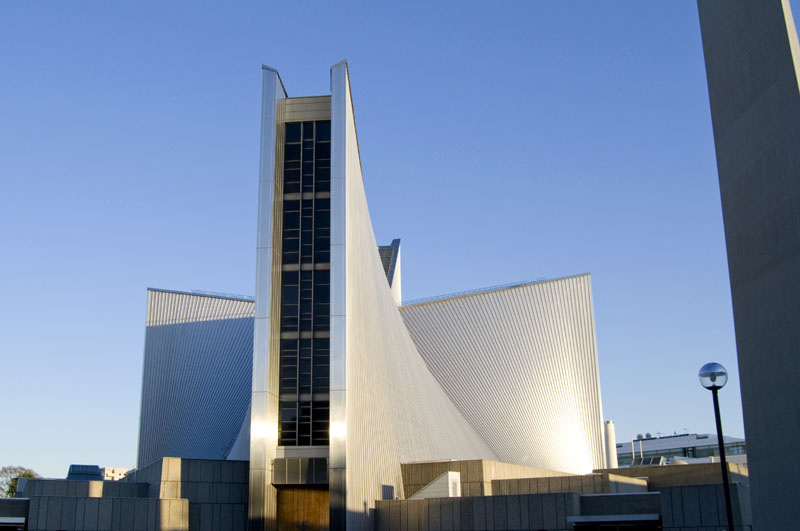
1
Kenzo Tange (1913-2005) was one of Japan's most prominent twentieth-century architects and the first Japanese winner of the prestigious Pritzger Prize, in 1987.
He was a founder of the avant-garde Metabolist group in the late 1950s, and as head of Tokyo University's Tange Laboratory during that period he had an enormous influence on subsequent generations of Japanese architects.
He was a founder of the avant-garde Metabolist group in the late 1950s, and as head of Tokyo University's Tange Laboratory during that period he had an enormous influence on subsequent generations of Japanese architects.
Although it has stood vacant since 2014, this was originally the headquarters building for Dentsu, then the world's largest advertising agency, from 1967 until 2002, after which it was occupied by a Dentsu subsidiary. It was originally designed as part of a grand urban-planning scheme for the Tsukiji neighborhood, where a grid of high-rise buildings would be connected by elevated bridges. Unfortunately the original design was watered down quite a bit, and this was the only part of the master plan that was actually built.
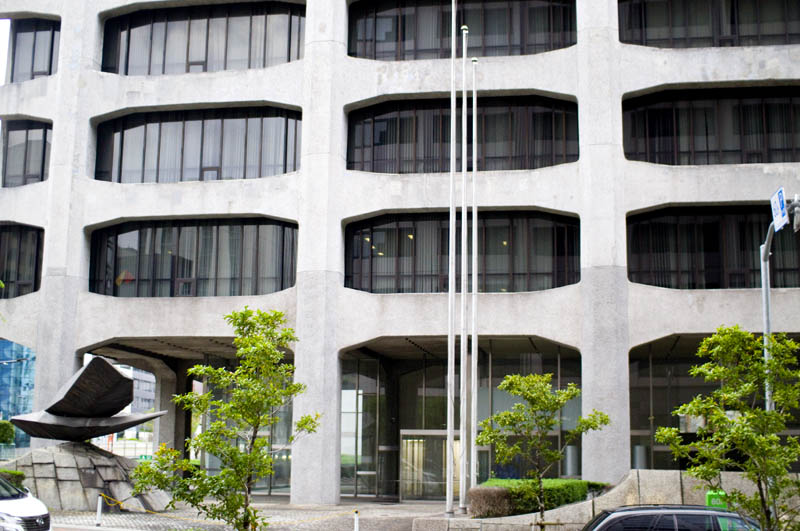
5
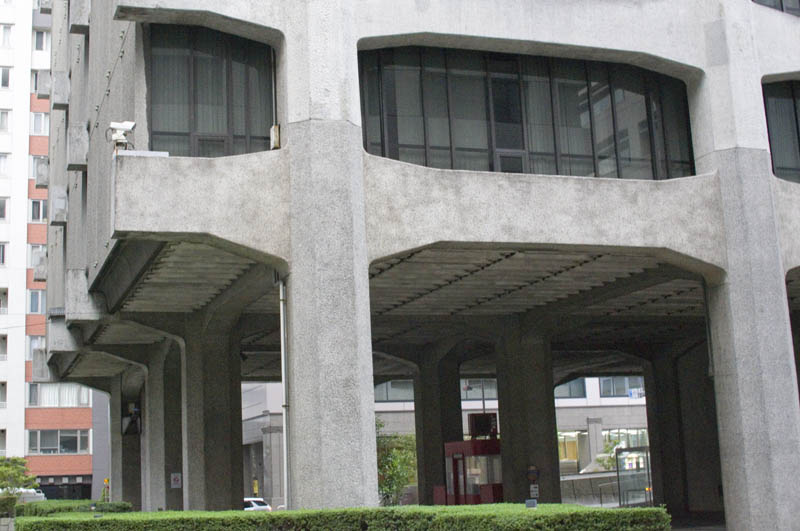
5
With its unusual silhouette, featuring a giant floating sphere and a skeletal central section of pedestrian bridges and columns, Fuji TV HQ quickly became a landmark of Tokyo Bay's Odaiba district. The silver-titanium ball is perched at a height of 100 meters above ground and houses an observation deck that's open to the public. Construction was completed in 1996.
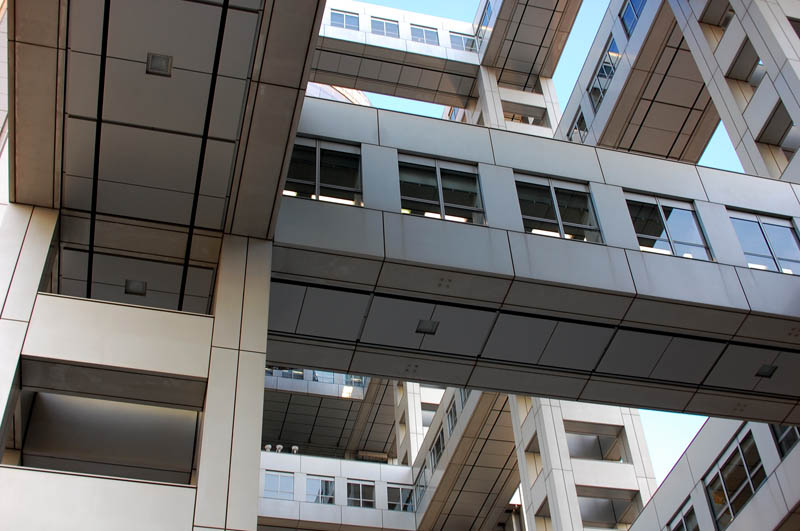
4
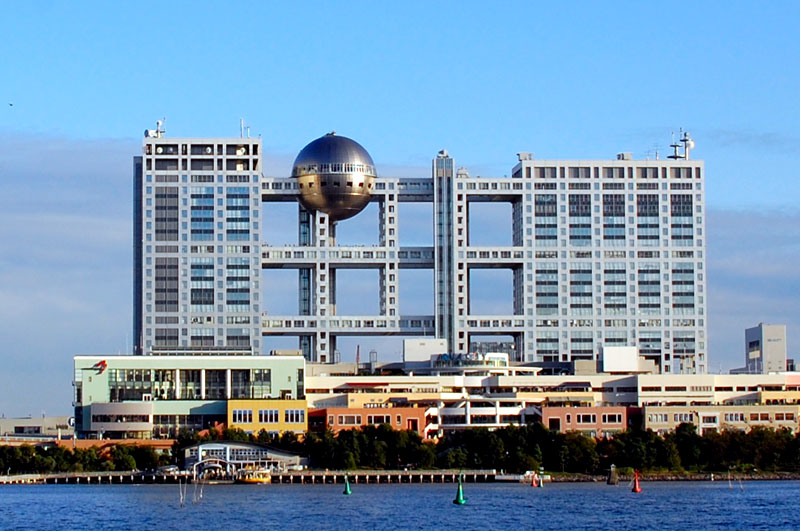
4
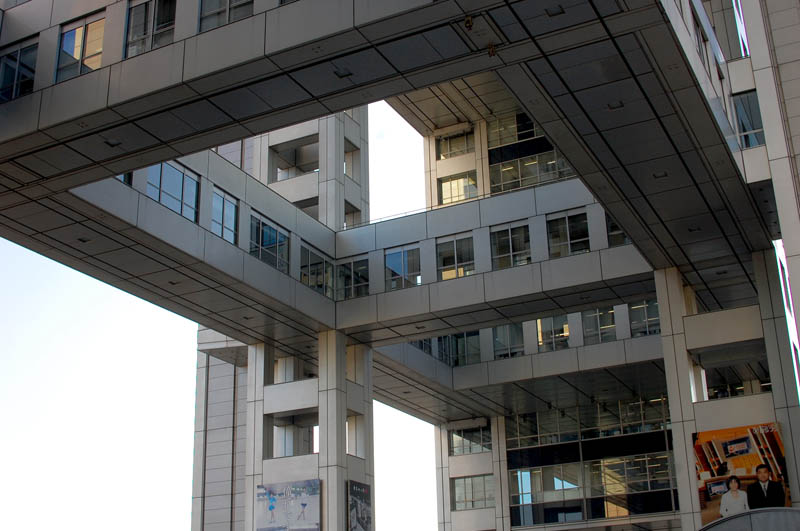
4
Built as one of the main arenas for the 1964 Tokyo Summer Olympics, this project brought Tange to international prominence. With its elegant, sweeping curves, the building has a light, aerodynamic quality in spite of its massive scale. At the time of its completion it had the largest suspended roof in the world.
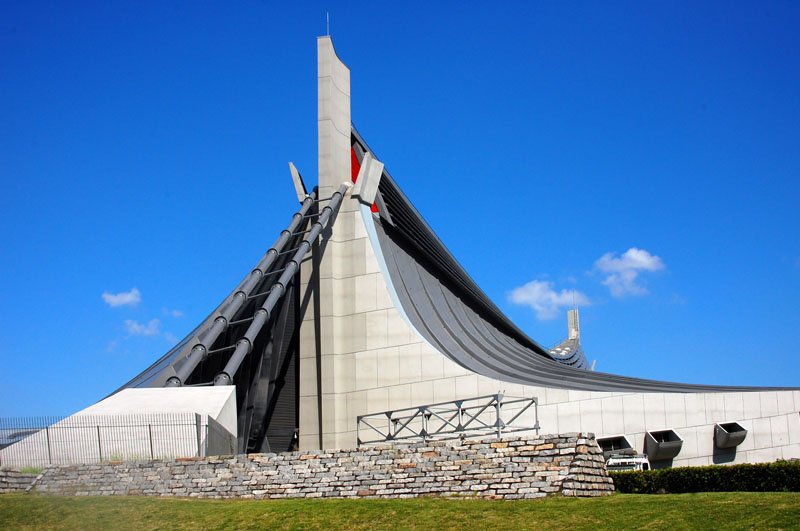
3
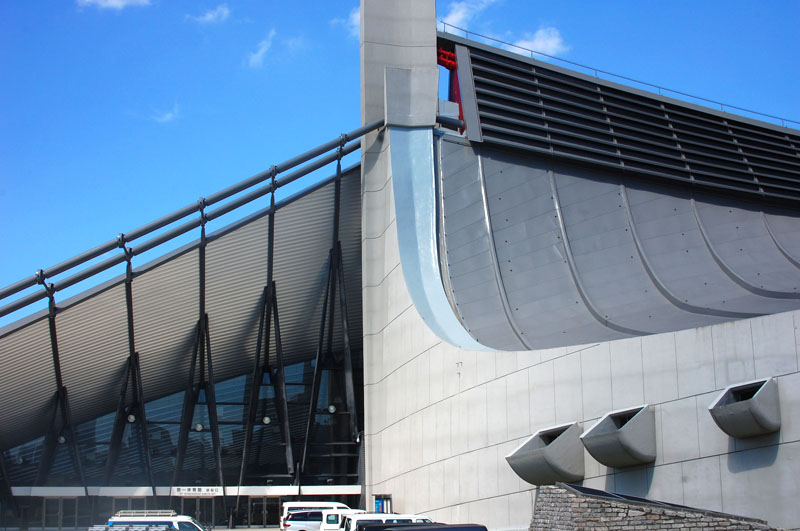
3
This early example of Metabolist architecture was completed in 1967 and occupies a prominent corner location near Shimbashi station. Built on a triangular site that's only 189 square meters in size, the building is constructed around a 7.7m-diameter cylindrical core containing elevators and stairways as well as kitchens and bathrooms on each floor. Individual cantilevered office units are attached to the core using giant bolts.
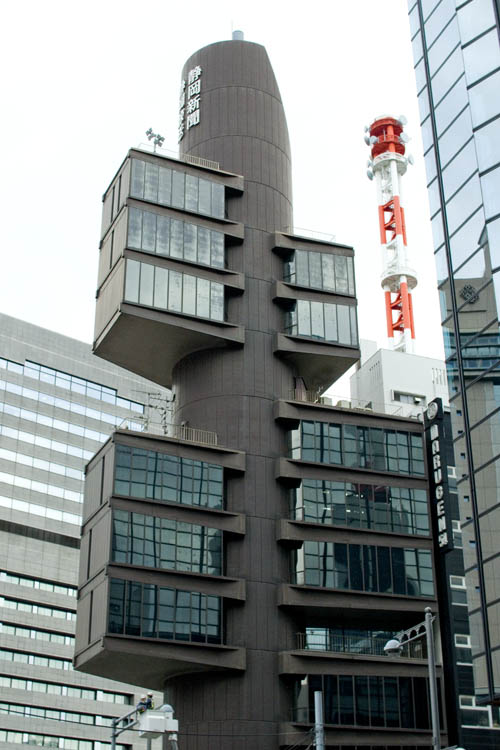
2
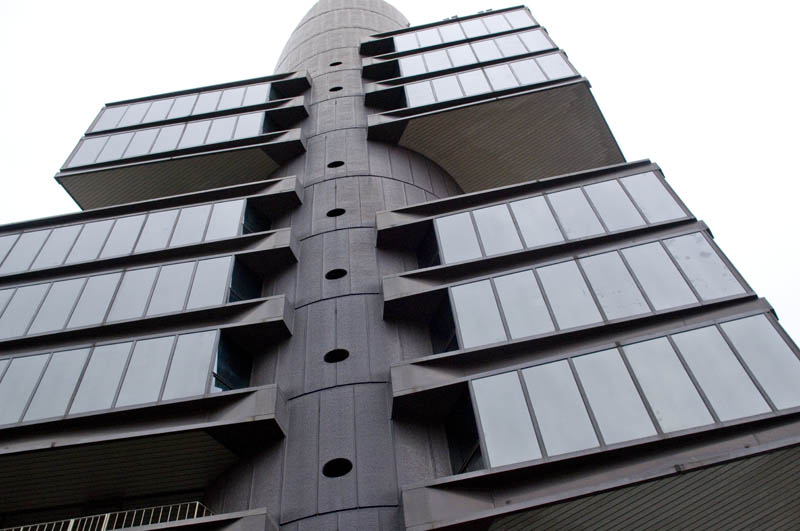
2
Completed in 1964 and designed around the same time as Yoyogi Gymnasium, St. Mary's also features swooping lines - eight parabolic curves that rise from the cross-shaped plan and serve as both roof and walls. The concrete structure is clad in stainless steel, reflecting sunlight in a changing pattern throughout the day.
[Other Tokyo buildings by Kenzo Tange include Shinjuku Park Tower, the Tokyo Metropolitan Government Building, United Nations University, the Kuwaiti Embassy, Sogetsu Kaikan, Rikkyo University Library and the Hanae Mori Building.]
[Other Tokyo buildings by Kenzo Tange include Shinjuku Park Tower, the Tokyo Metropolitan Government Building, United Nations University, the Kuwaiti Embassy, Sogetsu Kaikan, Rikkyo University Library and the Hanae Mori Building.]
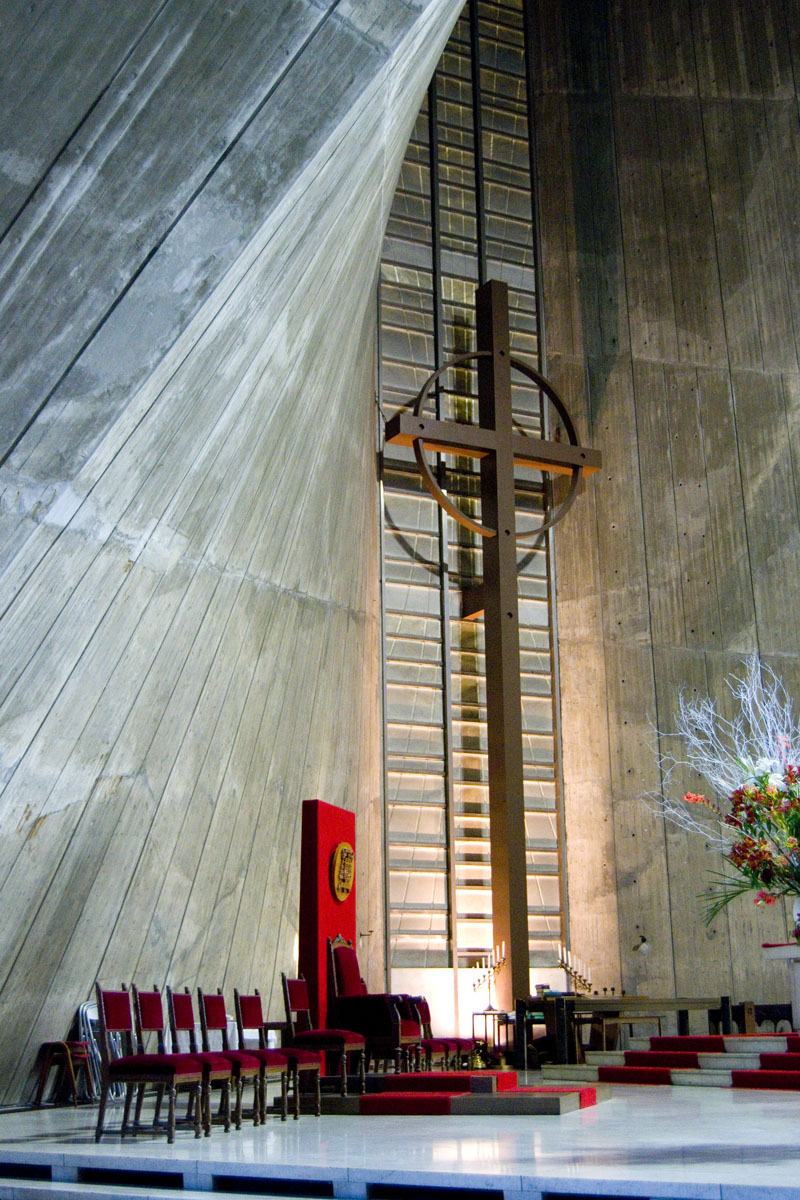
1
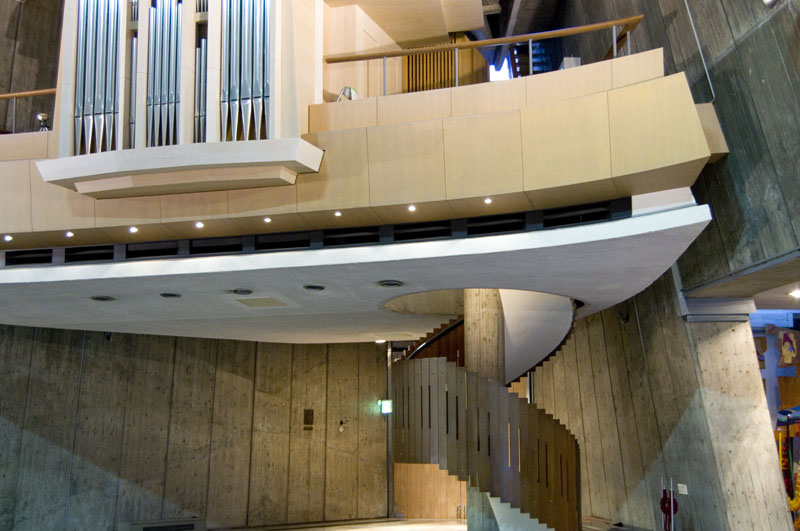
1
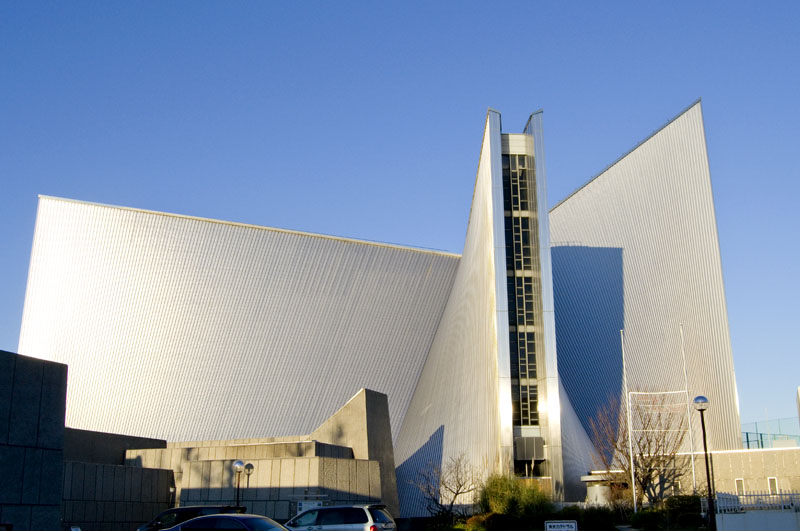
1


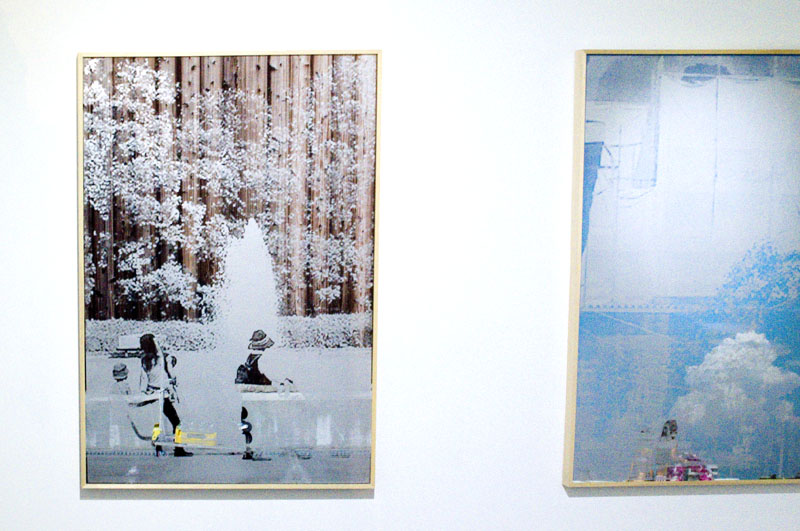
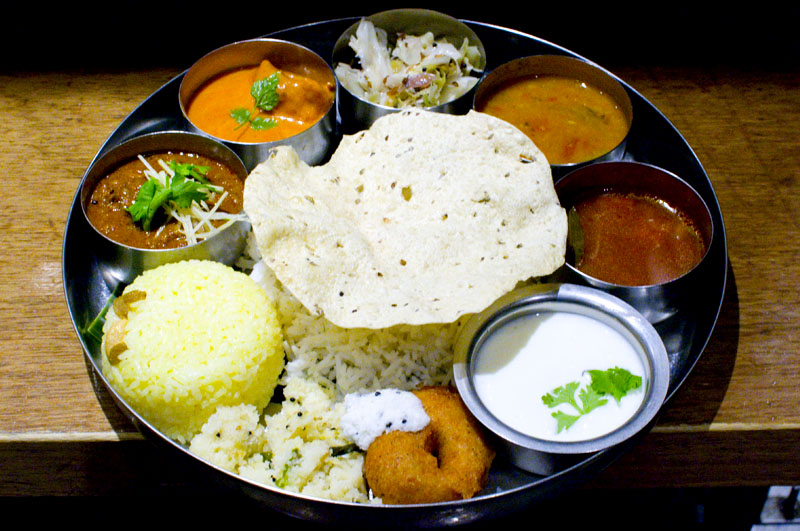
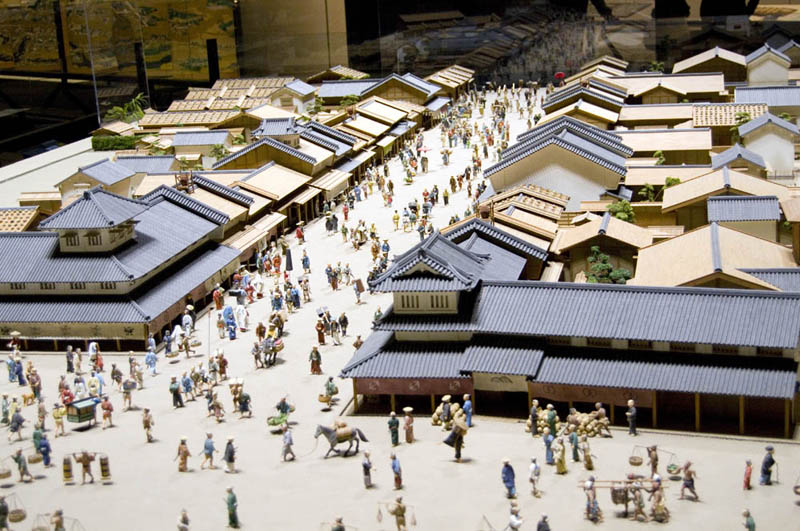
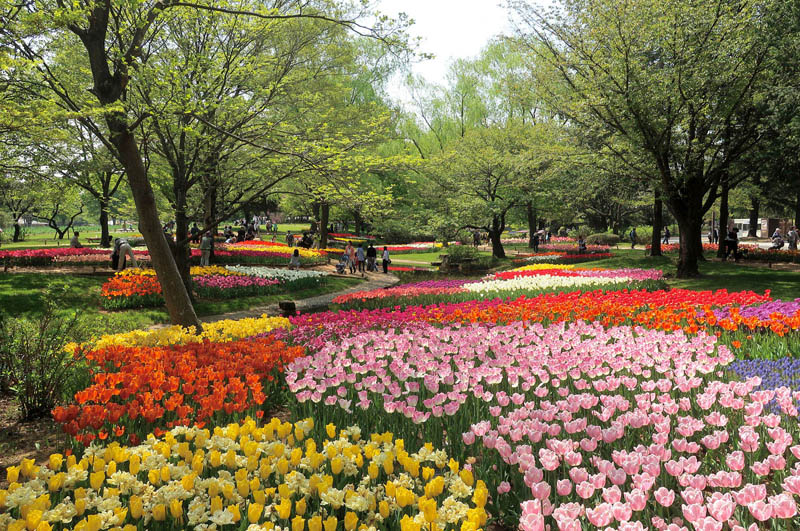
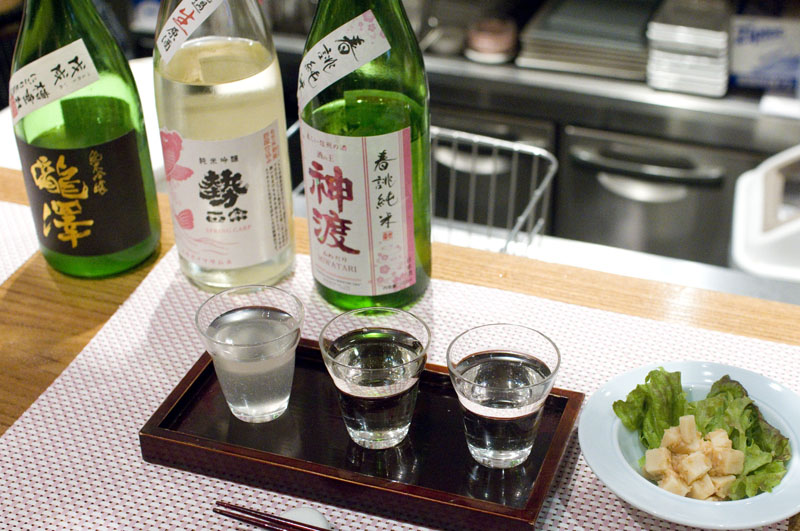
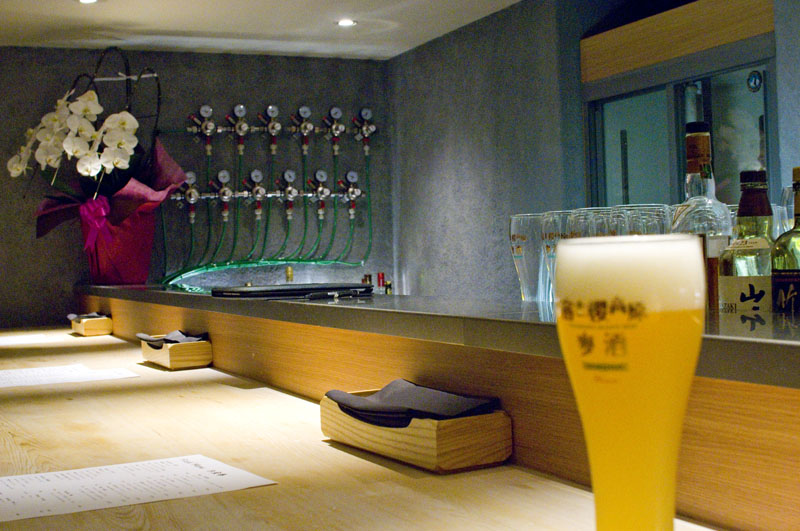
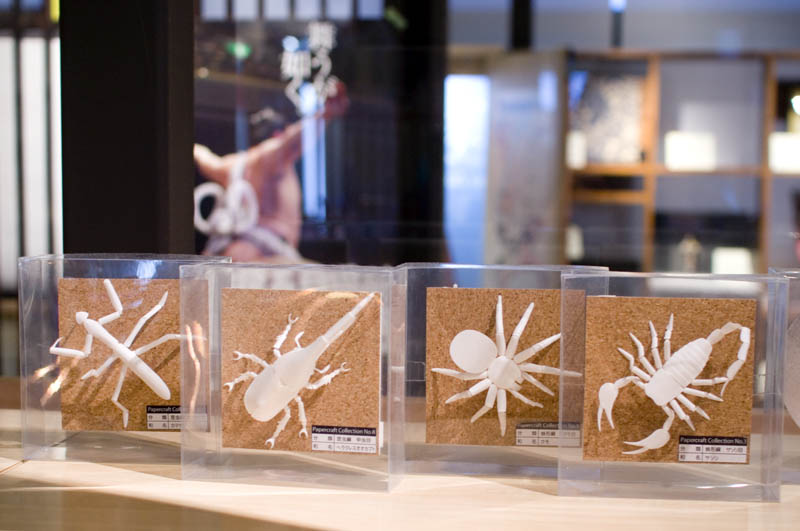
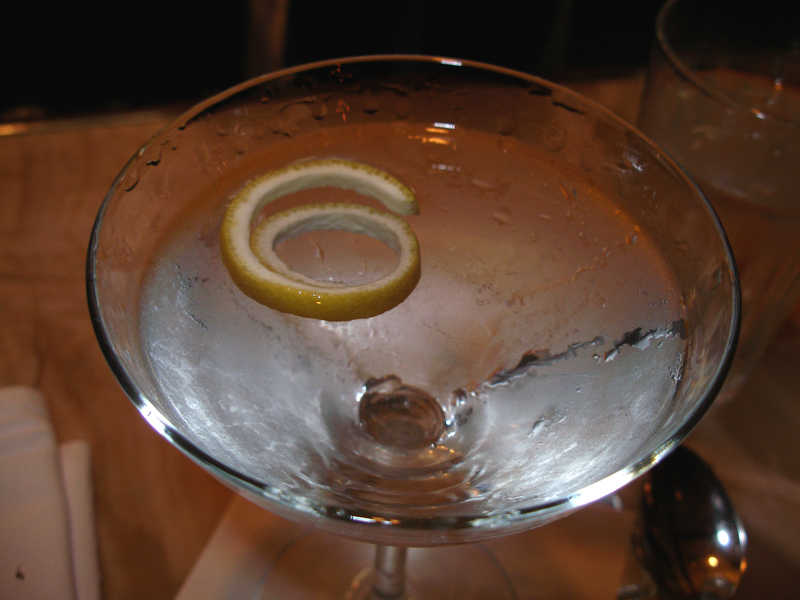
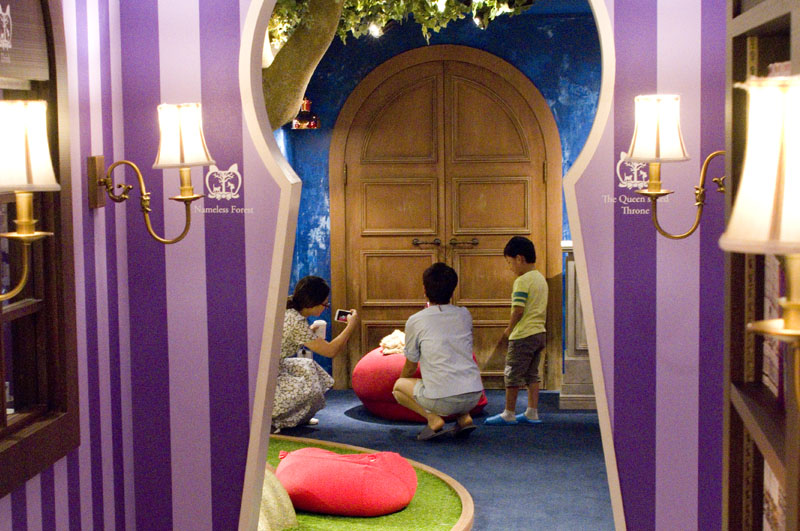
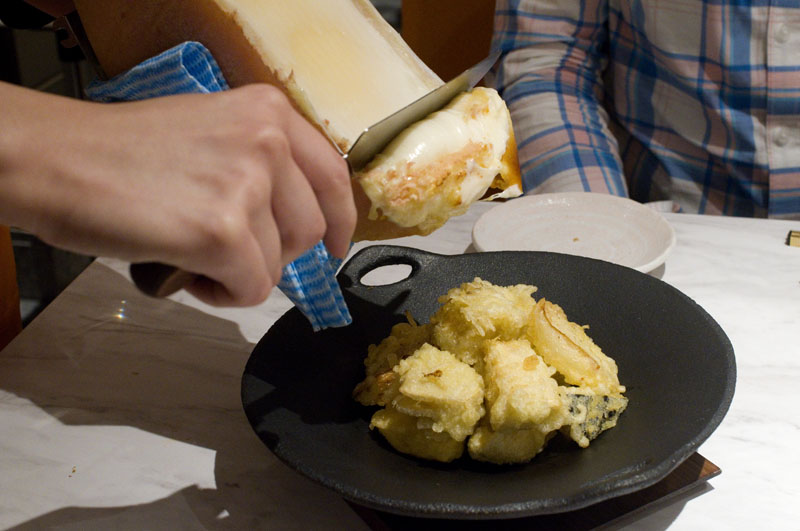
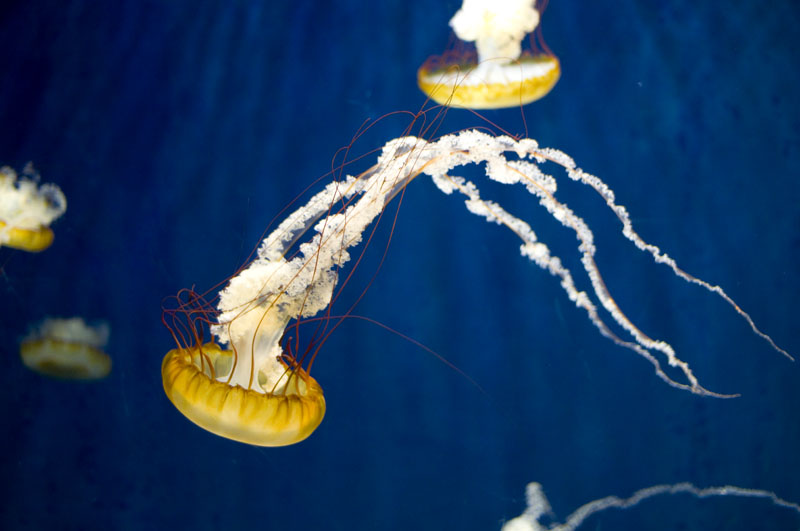
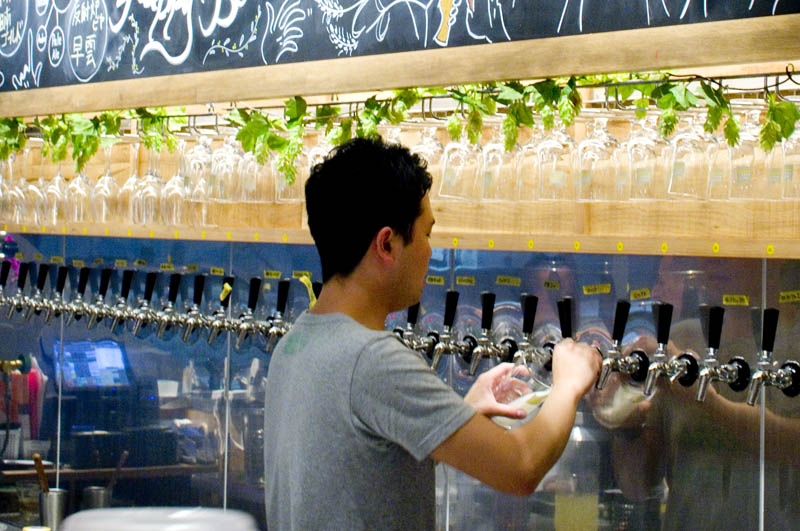
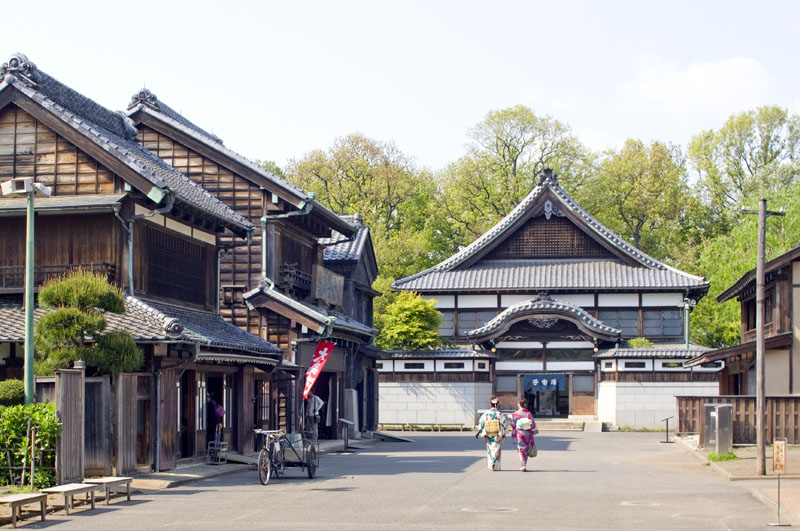
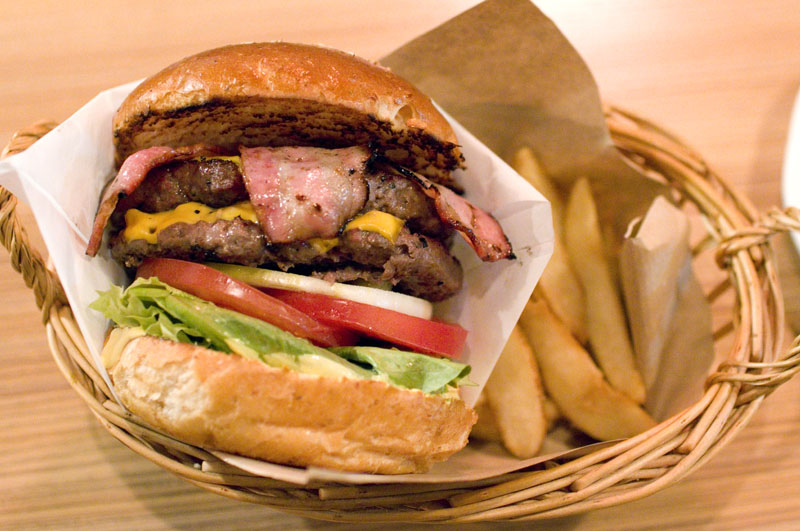
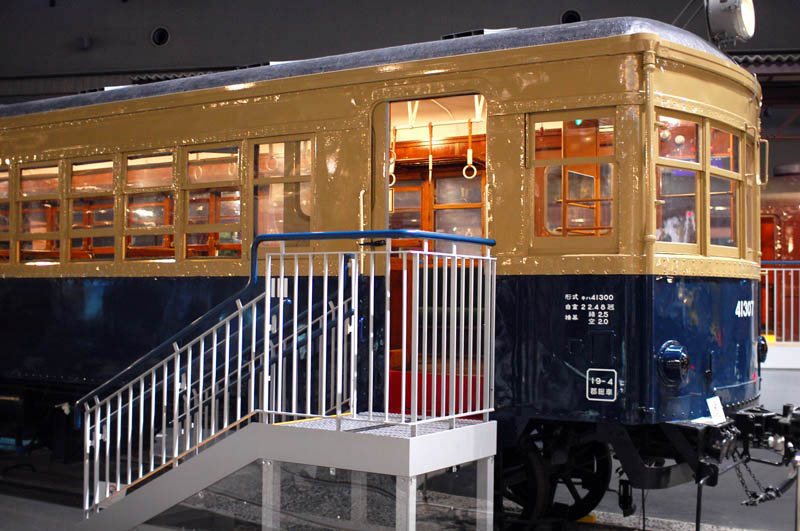
Twitter